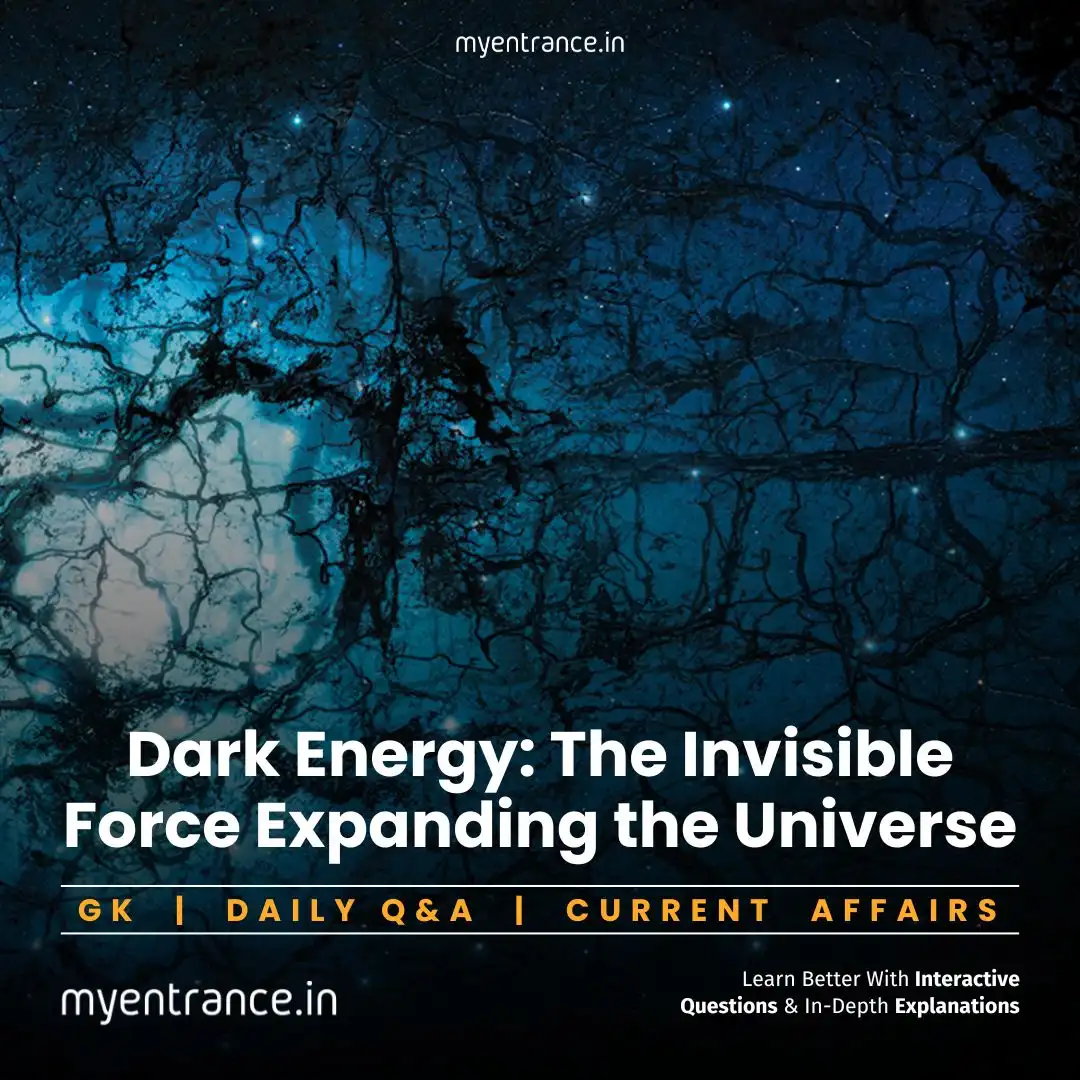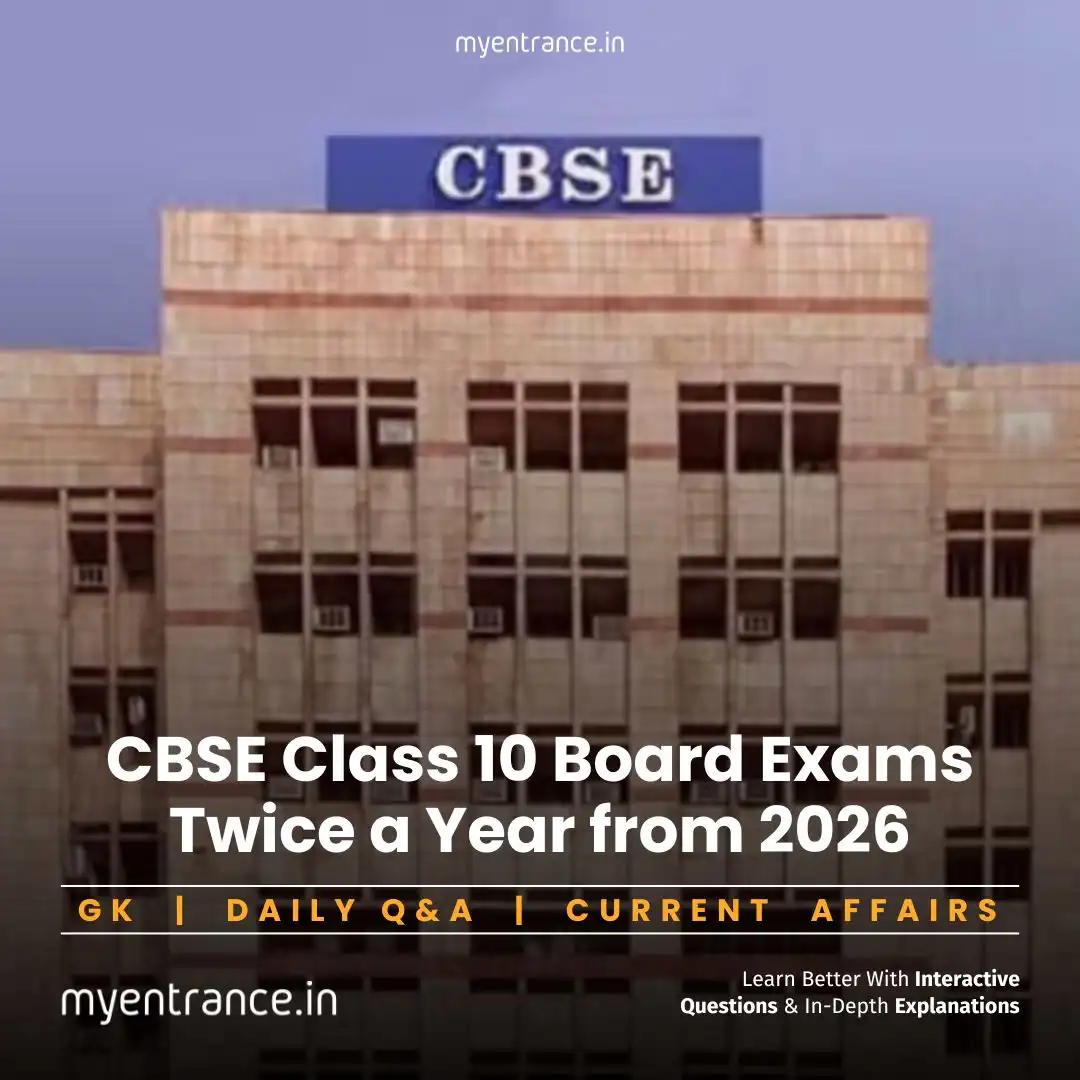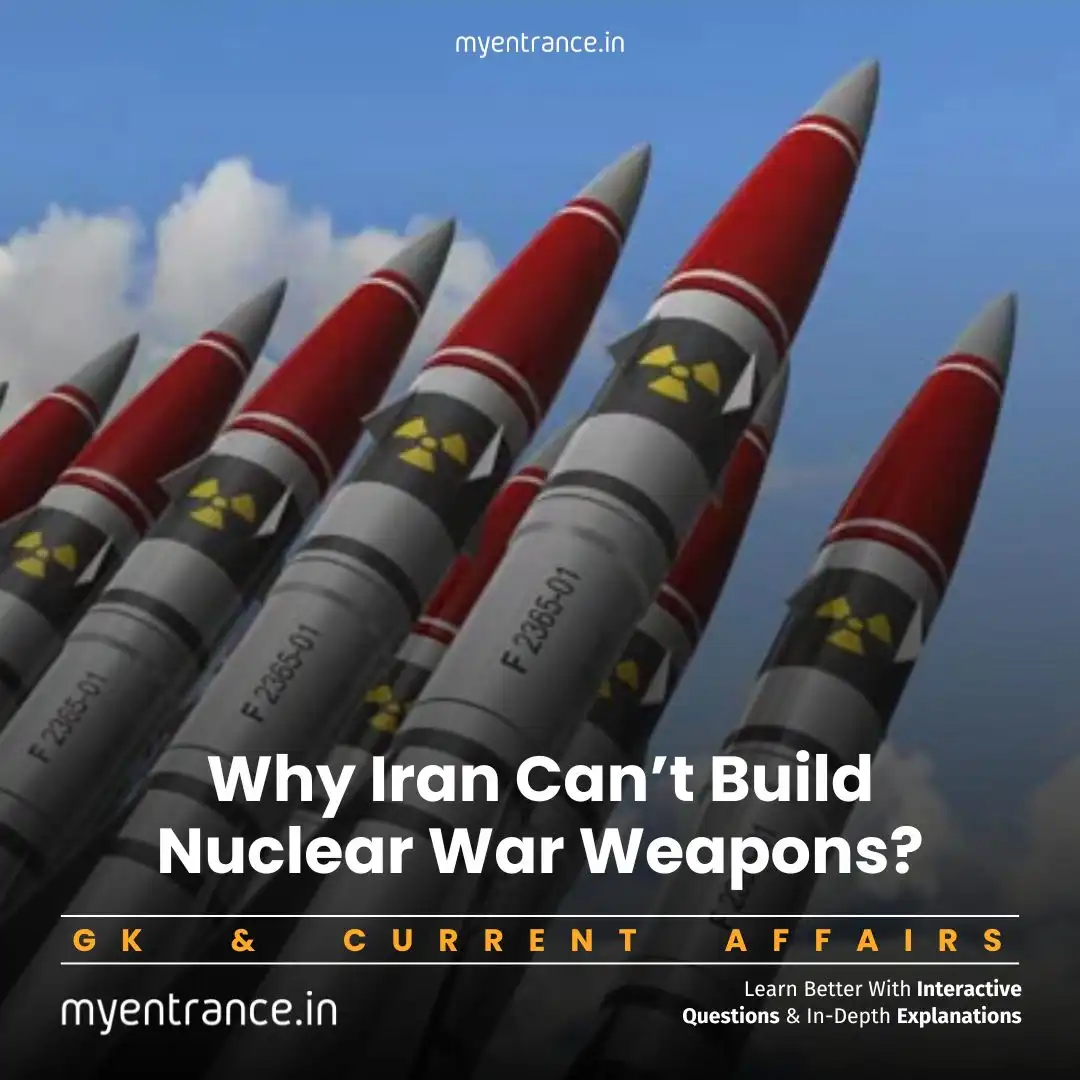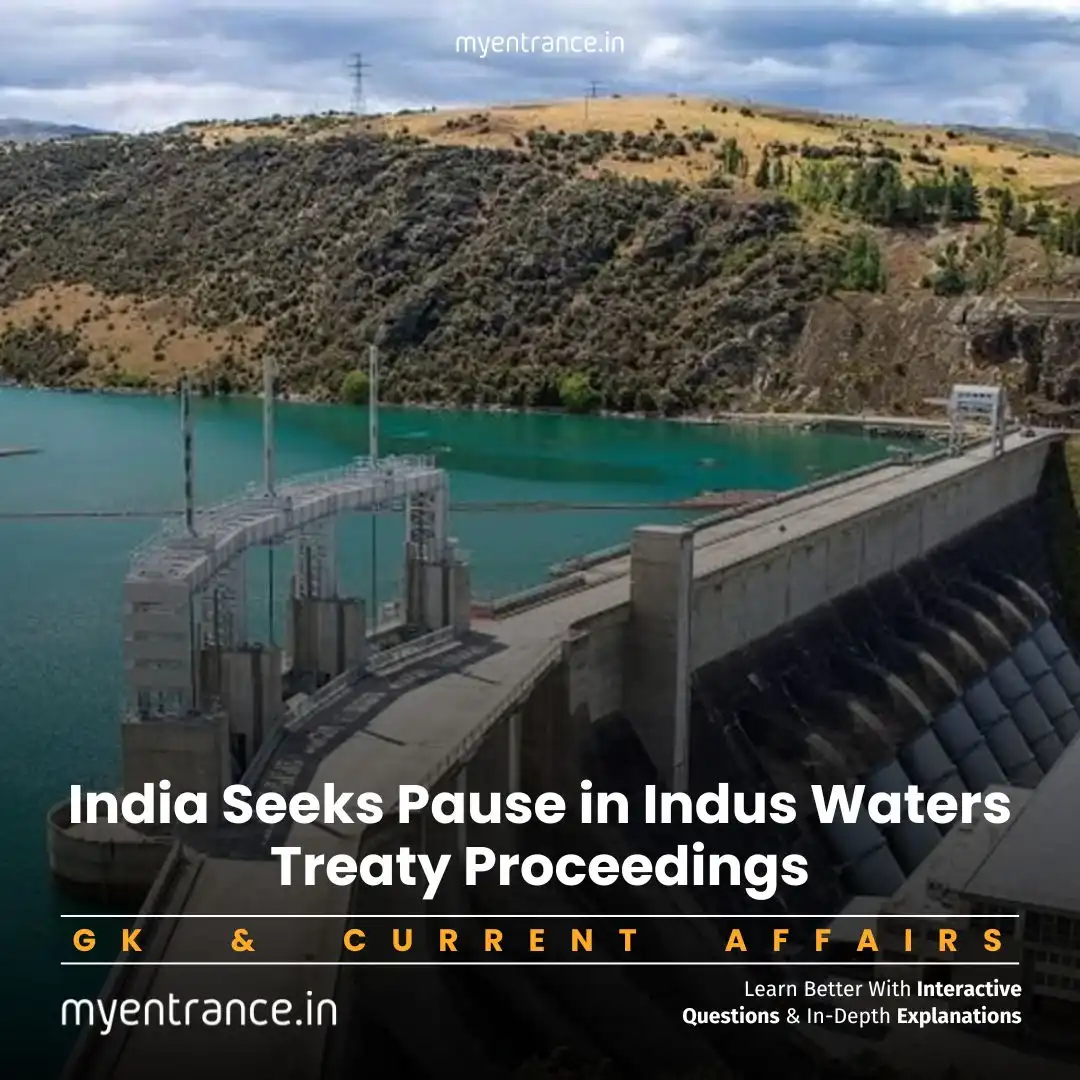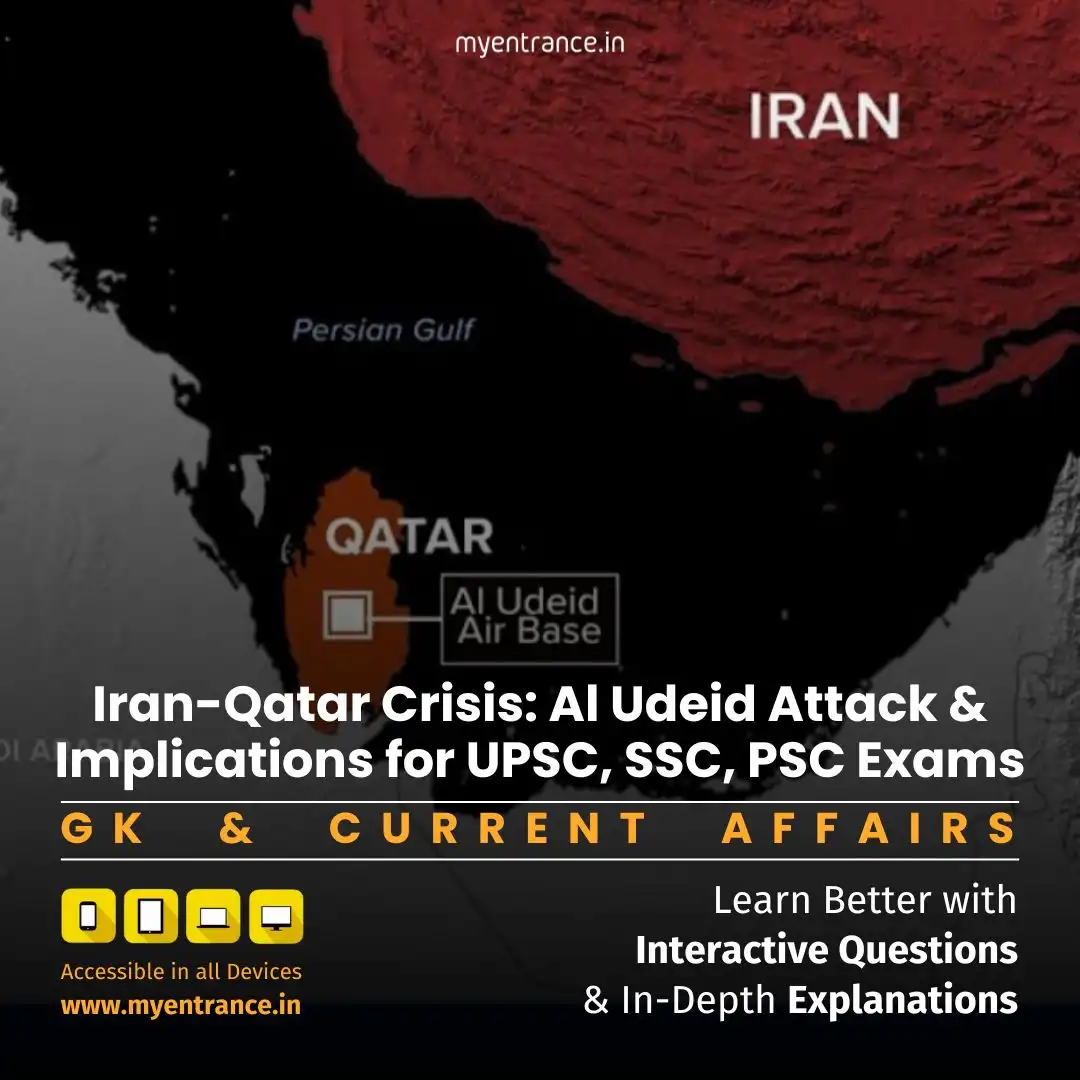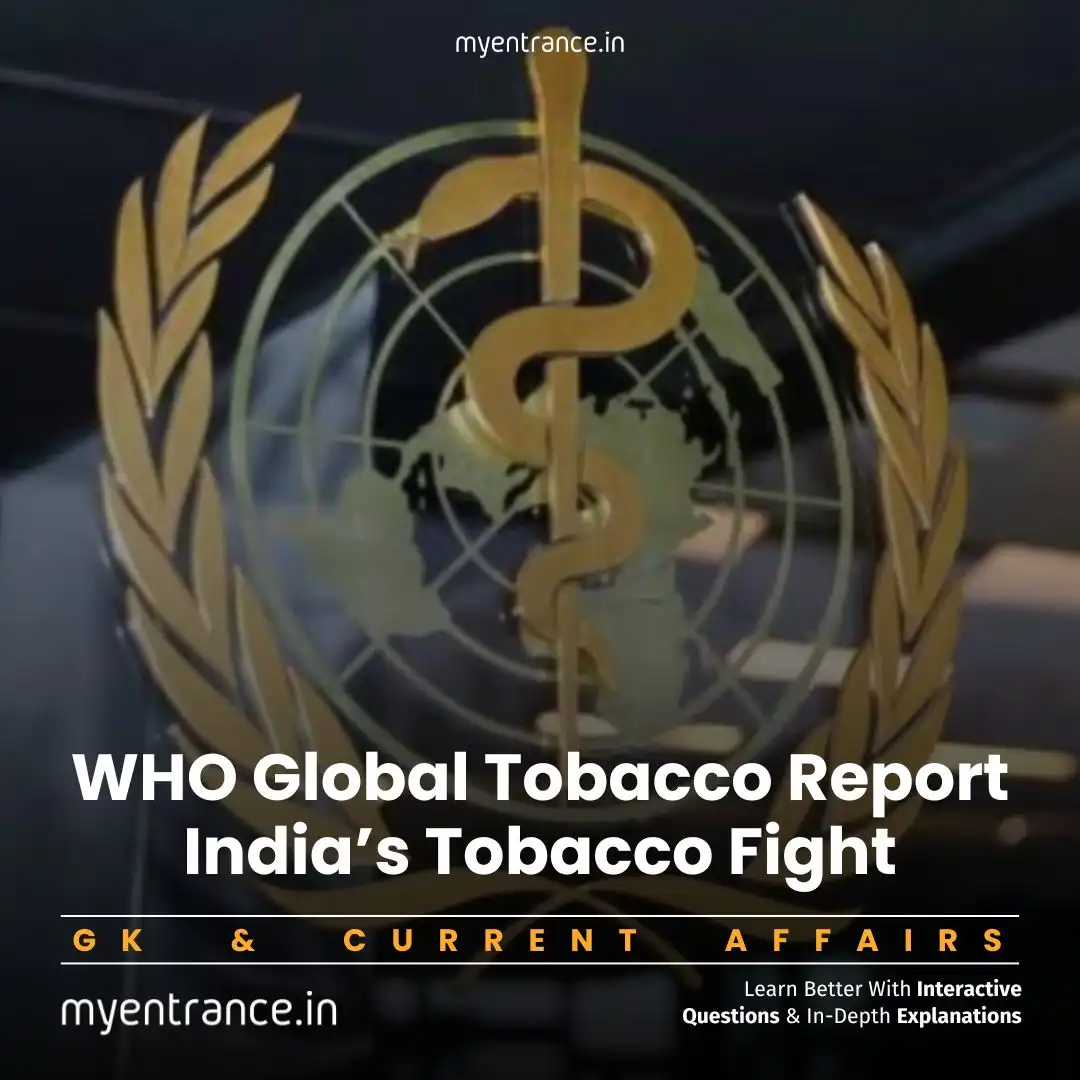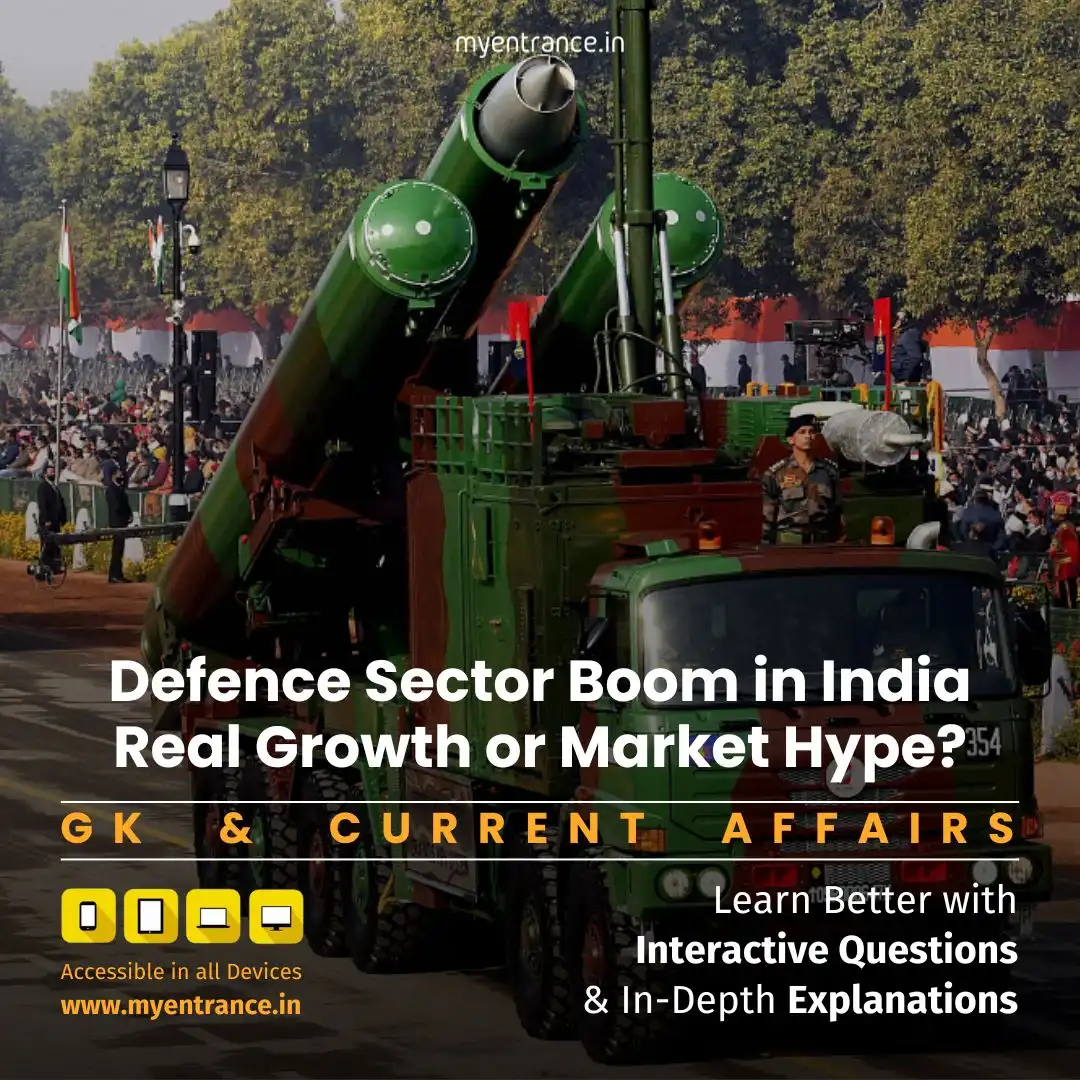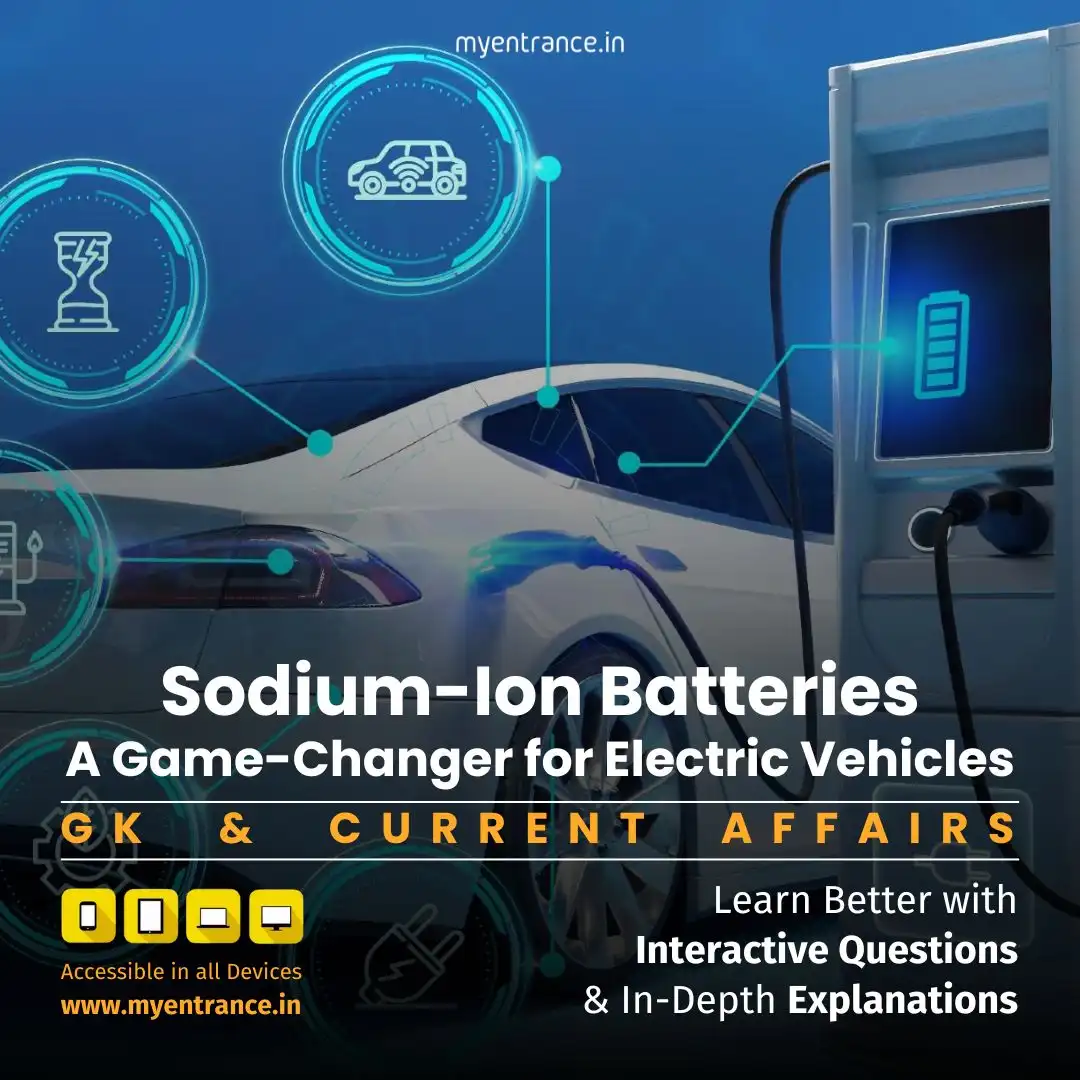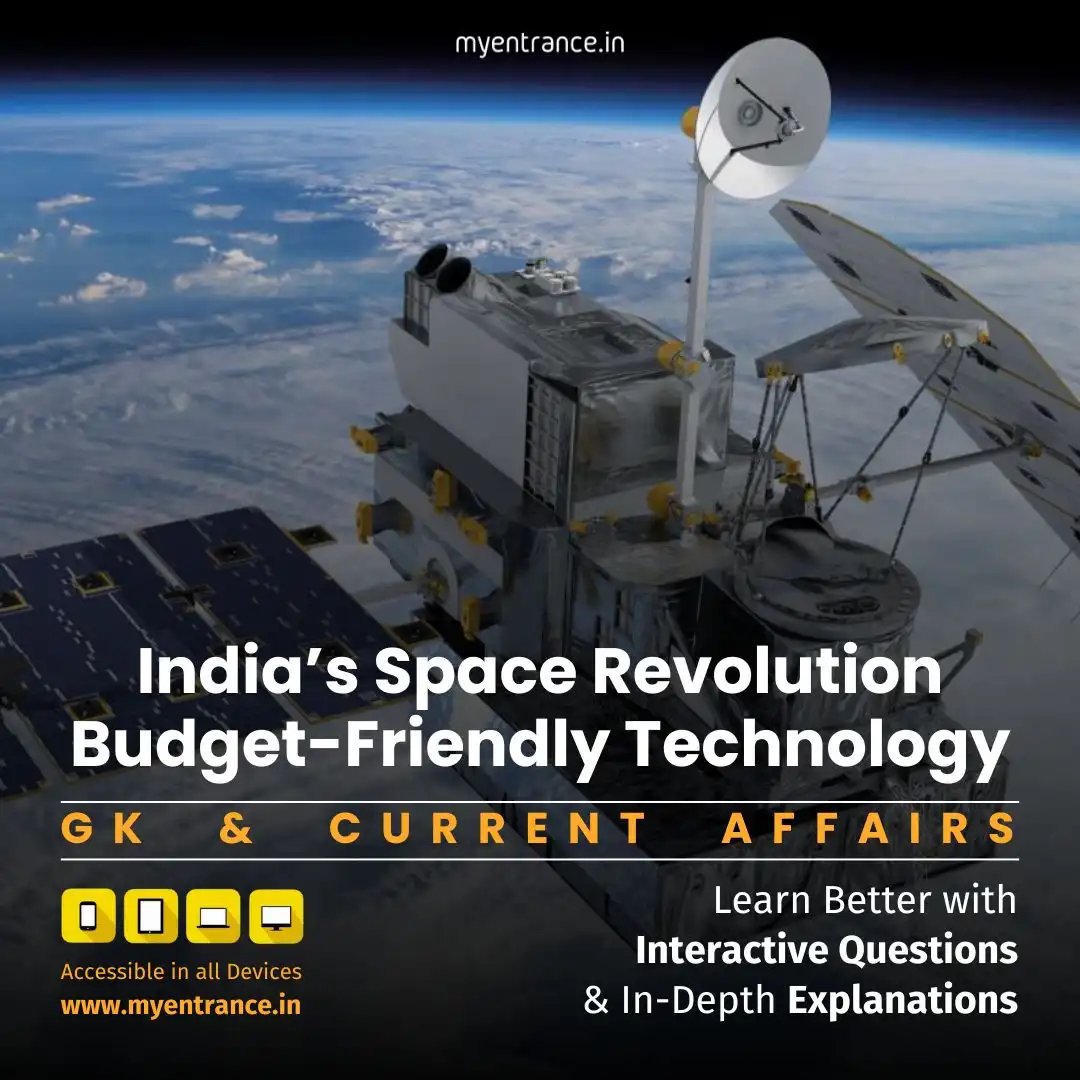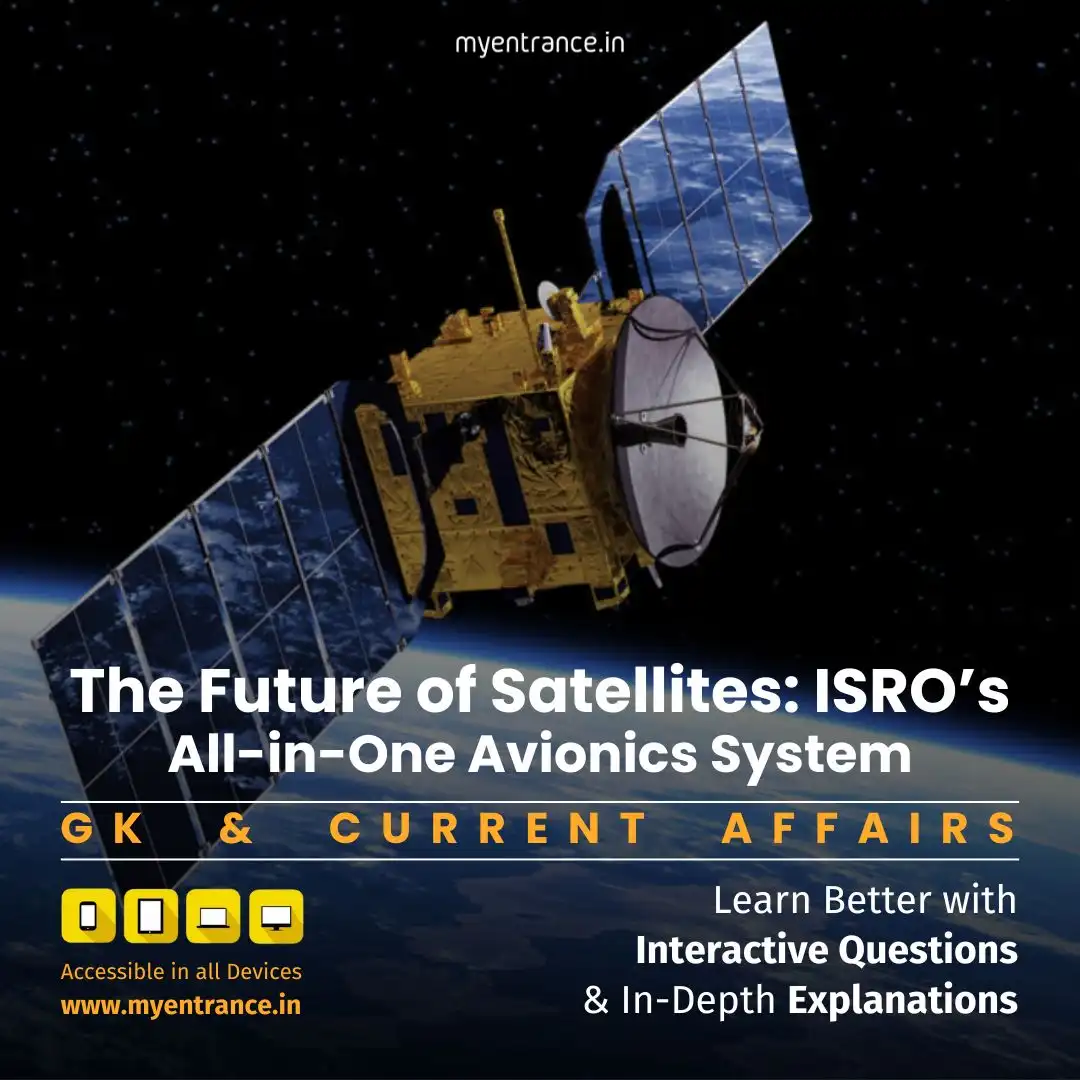Select Language
Fission, Fusion & Future: Nuclear Tech in Energy, Medicine & Exams
Recent strikes on nuclear facilities highlight the urgent need to balance technological progress with safety. For exam aspirants, understanding nuclear science—from fission to global treaties—is crucial for GK and essay sections.
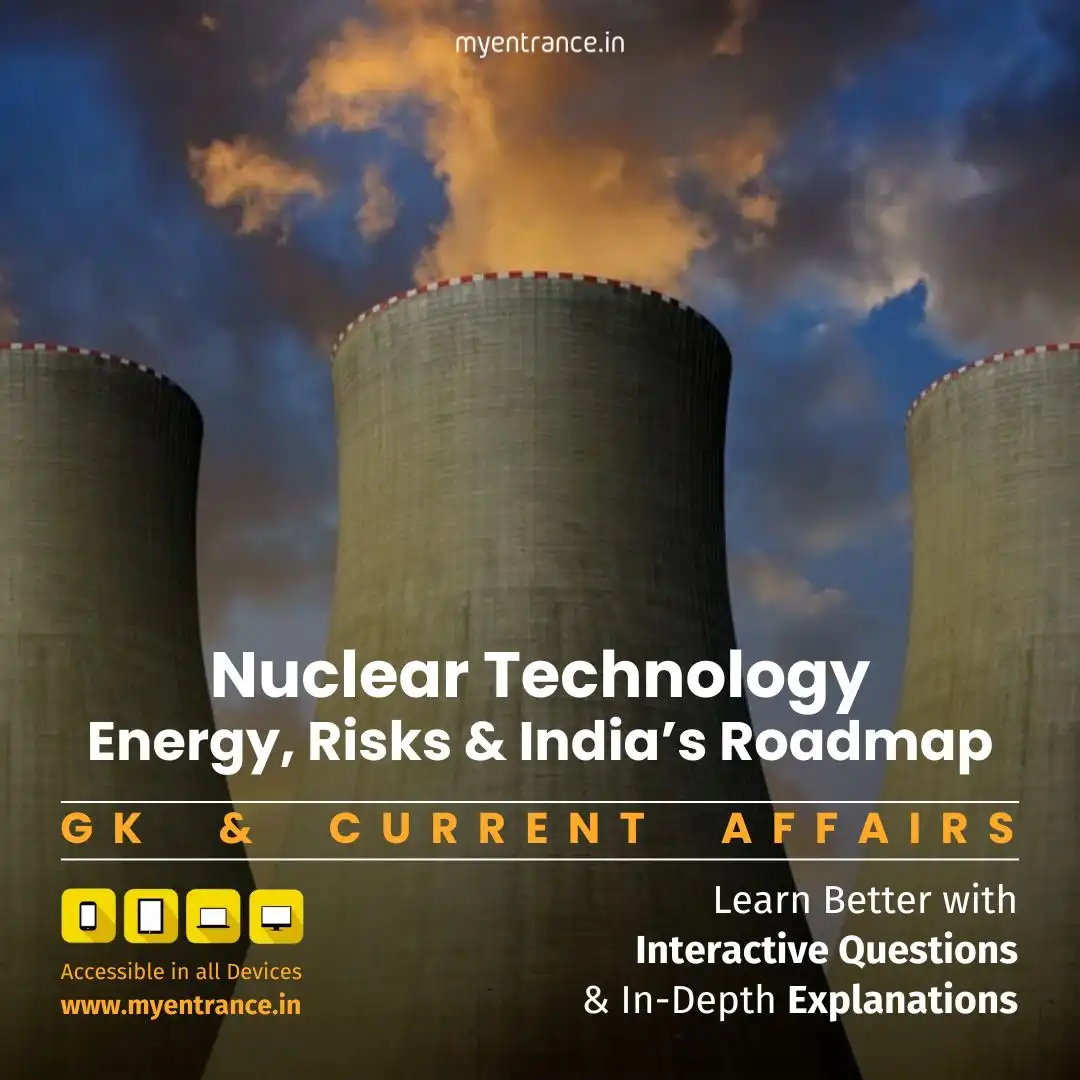
Nuclear Technology: Power & Peril
When attacks targeted Iran’s nuclear sites, fears of radiation leaks emerged—a stark reminder of nuclear technology’s double-edged impact. While it offers clean energy and medical breakthroughs, its destructive potential demands robust global regulation.
The Science Simplified
Nuclear fission splits heavy atoms (like uranium), releasing massive energy (used in power plants). Nuclear fusion merges light atoms (like hydrogen)—the Sun’s energy source—but remains experimental. Both processes fuel everything from reactors to weapons.
Beyond Bombs: Peaceful Applications
Clean Energy: 440 global reactors generate 392 GW of low-carbon electricity (IAEA, 2024).
Healthcare: Radiotherapy and PET scans battle cancer; radioisotopes diagnose diseases.
Agriculture: Irradiation preserves food; sterile insect techniques replace pesticides.
Climate Action: 31 nations pledged to triple nuclear capacity by 2050 at COP28.
Global Rules: IAEA & Treaties
IAEA (1957): Promotes peaceful nuclear use and monitors compliance.
NPT (1970): Bans non-nuclear states from weapons development; allows peaceful tech access.
CTBT (1996): Prohibits nuclear test explosions worldwide.
India’s 3-Stage Nuclear Programme
Stage 1: PHWRs using natural uranium (operational).
Stage 2: Fast Breeder Reactors (e.g., Kalpakkam PFBR) using plutonium/thorium.
Stage 3: Thorium-based reactors for energy independence.
*Budget 2025-26 allocates ₹20,000 crore for Small Modular Reactors (SMRs) targeting 100 GW by 2047.*
Safety & Challenges
Risks: Radiation leaks (Chernobyl/Fukushima), uranium mining hazards, waste disposal.
Mitigation: India’s Atomic Energy Regulatory Board (AERB) enforces strict protocols; the Civil Liability for Nuclear Damage Act (2010) holds operators accountable.
Sample Q&A for Exam Prep
Q: How does nuclear fission differ from fusion?
A: Fission splits heavy atoms (uranium/plutonium), releasing energy for power/weapons. Fusion merges light atoms (hydrogen), mimicking the Sun—cleaner but not yet commercially viable.
Q: What is the goal of India’s 3-stage nuclear programme?
A: To achieve energy self-sufficiency by using thorium reserves. Stages: 1) PHWRs, 2) Fast Breeder Reactors, 3) Advanced thorium reactors.
Q: Why is nuclear energy vital for climate goals?
A: It provides 24/7 low-carbon electricity—tripling its capacity by 2050 (per COP28) could replace coal/gas emissions.
Q: Name two key functions of the IAEA.
A: ① Monitoring nuclear facilities to prevent weapons proliferation. ② Promoting peaceful uses (e.g., cancer treatment, crop resilience).
Q: What are Small Modular Reactors (SMRs)?
A: Compact, factory-built reactors offering enhanced safety and scalability. India’s Nuclear Energy Mission focuses on SMRs for faster 100 GW deployment.
Most Predicted Questions
Comprehensive study materials, Expert-guided tips & tricks, Mock tests and instant results.
Start your SSC, NIFT, NID, FDDI, PSC journey today with MyEntrance, your ultimate online coaching platform.

